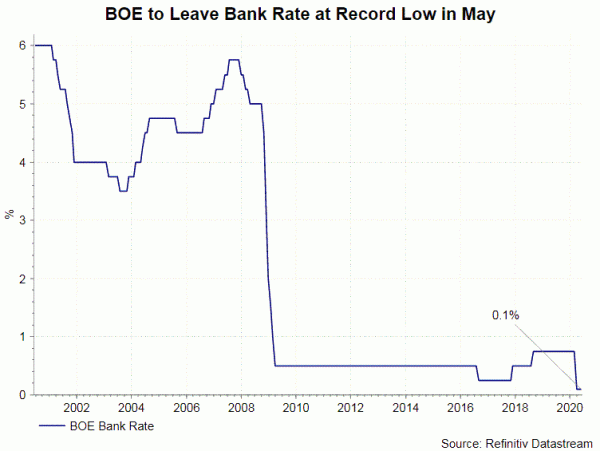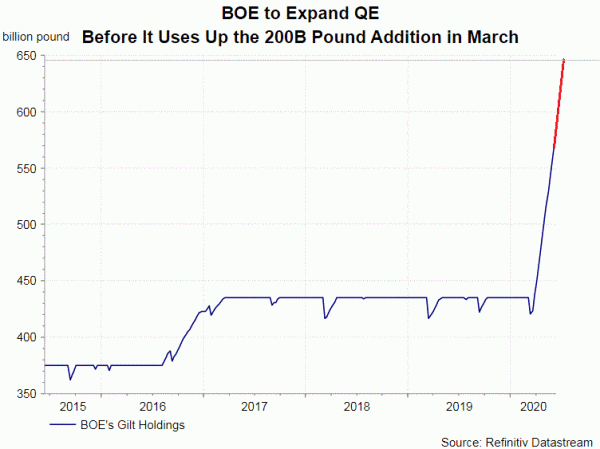Although there are signs that the coronavirus outbreak in the UK is stabilizing, its economic impact has just been emerged. Record contraction in GDP, sharp slowdown in inflation and weak employment indicators suggest that the BOE would have to maintain a very expansionary monetary policy stance. Together with lukewarm development in trade negotiation with the EU, we expect BOE to add more stimuli, via expanding its QE program, at the upcoming meeting.
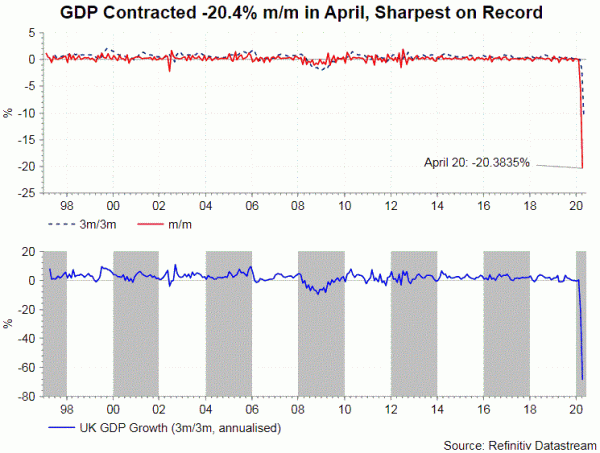
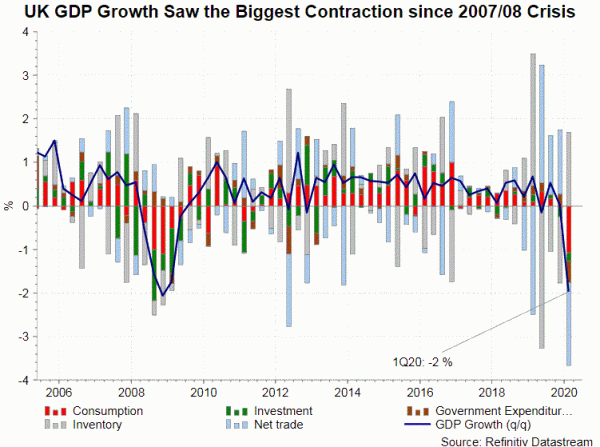
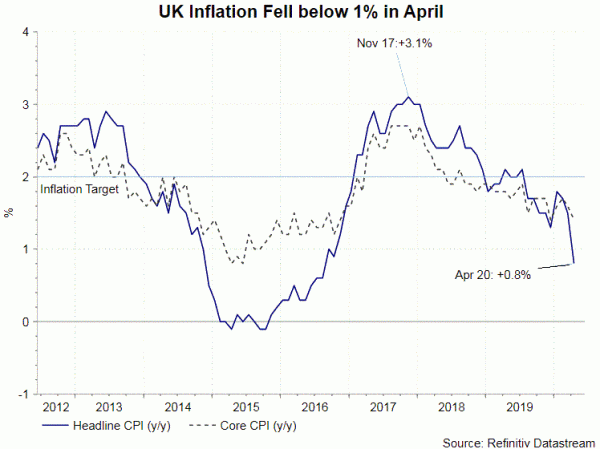 UK’s economic activities have been severely affected by the lockdown and other restrictive measures. GDP dived by a record pace of -24.5% y/y in April. This was compared with -5.3% in March. Industrial output dived -24.4% y/y in April, compared with consensus of -19.3% and -8.2%. in March. Headline CPI slowed to +0.9% y/y in April, form +1.5% a month ago. Core CPI slipped to +1.4% y/y, from +1.6% in March. The latest employment report will be released on June 16. The market expects that the number of jobs declined -83K in the three months through April, taking the unemployment rate higher to 4.7% (March: 3.9%).There are signs of improvement in May but only very gradually. For instance, final reading of Markit/CIPS composite PMI added +1.1 points to 30. This suggests that the economy stayed in deep contraction.
UK’s economic activities have been severely affected by the lockdown and other restrictive measures. GDP dived by a record pace of -24.5% y/y in April. This was compared with -5.3% in March. Industrial output dived -24.4% y/y in April, compared with consensus of -19.3% and -8.2%. in March. Headline CPI slowed to +0.9% y/y in April, form +1.5% a month ago. Core CPI slipped to +1.4% y/y, from +1.6% in March. The latest employment report will be released on June 16. The market expects that the number of jobs declined -83K in the three months through April, taking the unemployment rate higher to 4.7% (March: 3.9%).There are signs of improvement in May but only very gradually. For instance, final reading of Markit/CIPS composite PMI added +1.1 points to 30. This suggests that the economy stayed in deep contraction.
On the monetary policy, BOE cut the bank rate, by -65 bps, to 0.1% in March. Besides, it increased the size of the asset purchase facility (QE) by +200B pound to 645B pound in the month. A Covid Corporate Financing Facility (CCFF) was launched on March 17, aiming at providing funding to businesses by purchasing commercial paper. Other term funding facilities and open market operations were also launched in order to inject ample liquidity to the market.
For the June meeting, we expect BOE to leave the policy rate unchanged. Yet, talks of negative rates should be closely watched. Unlike the Fed, BOE has never ruled out the possibility of adopting negative interest rate. Indeed, comments by some MPC members over the past few weeks have revealed active discussion on the possibility of negative rates. Speaking before the House of Commons Treasury select committee in May, Governor Andrew Bailey admitted that negative rates were under “active review”. While noting that the members are “very keen to observe how the economy responds to the cuts that” have been made, Bailey suggested that the central bank is “looking very carefully at the experience of those other central banks that have used negative rates”. Chief economist Andy Haldane suggested that BOE is “not remotely closed” to negative rates. Yet, the members are considering the consequences for banks and lenders, i.e., margin squeeze.
Meanwhile, policymakers will likely increase the size of QE by 100B pound. After the expansion in March, BOE’s balance sheet has been inflated rapidly to about 570B pound. If the pace of asset purchases remains, the target size of 645B pound will be exhausted by July. An increase in the size of its asset purchase program is therefore necessary. Indeed, we expect further increase will be needed in the second half of the year.




